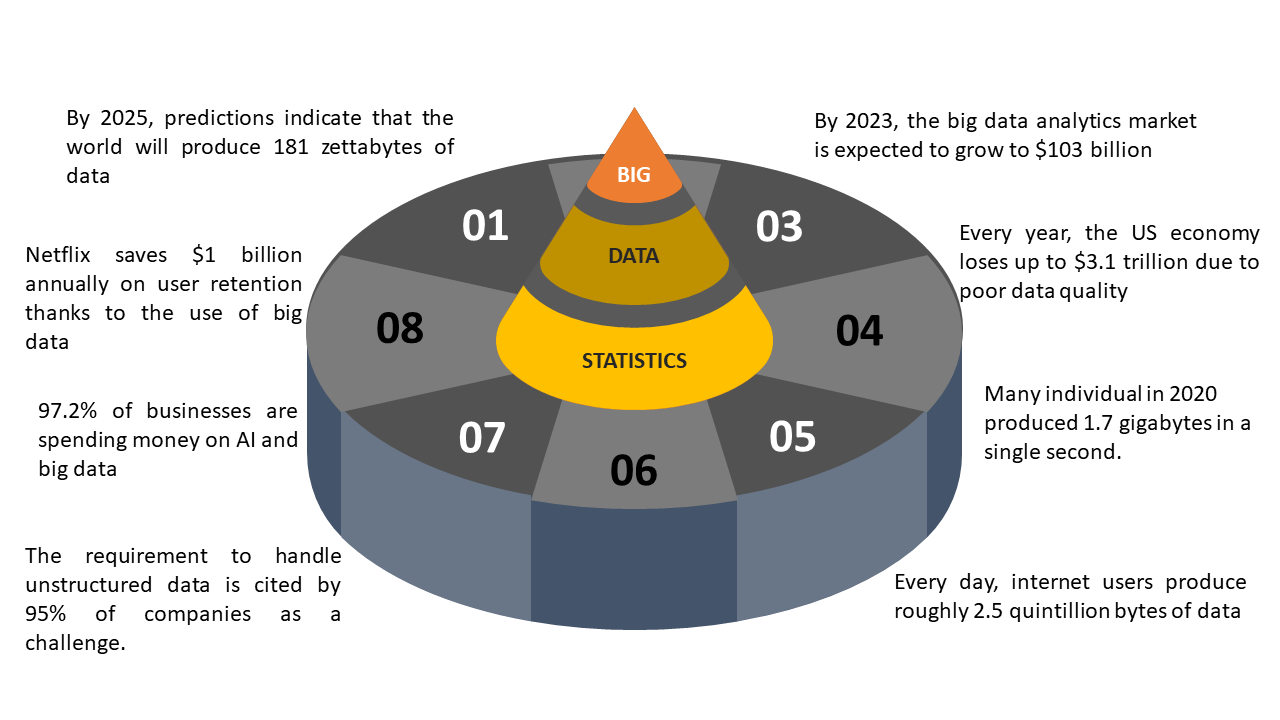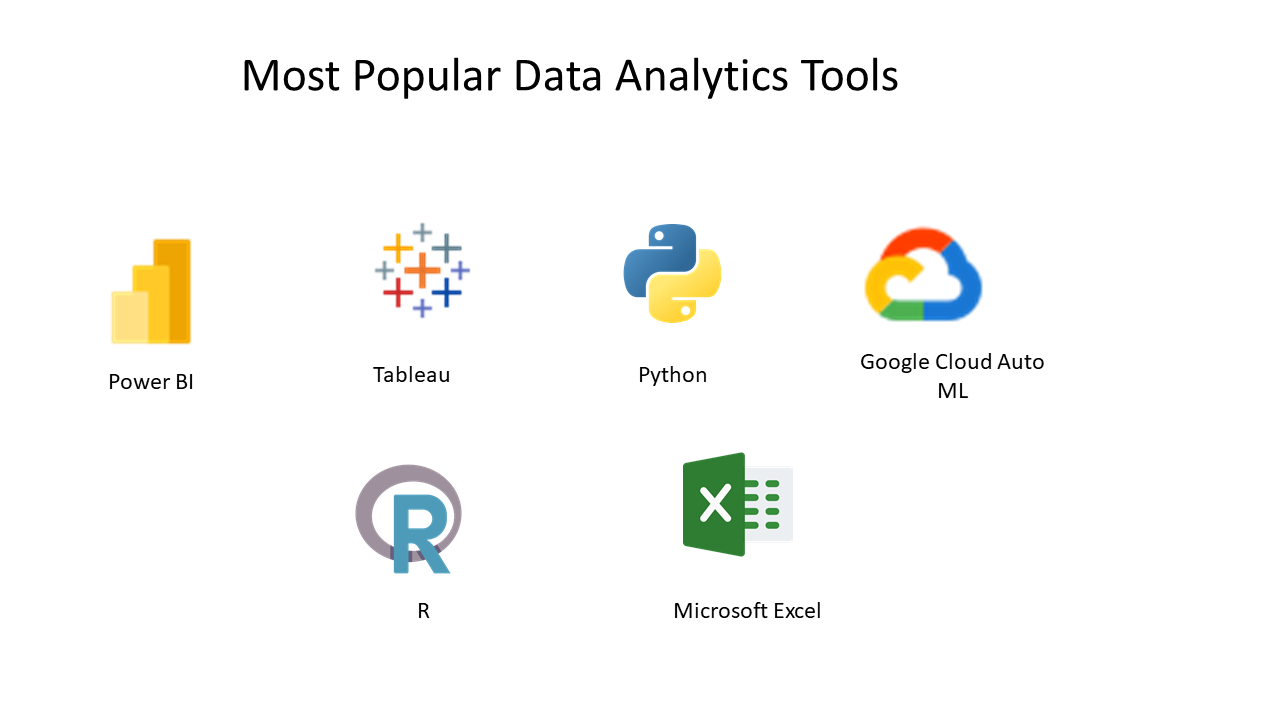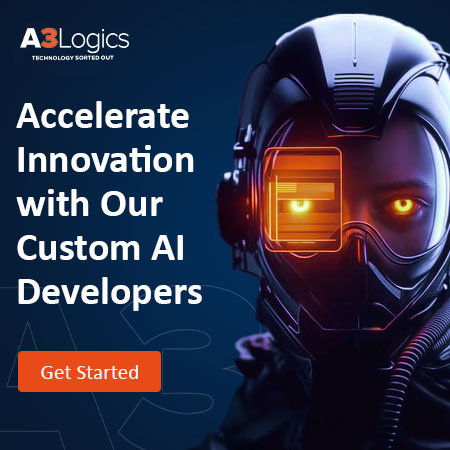In the consistently developing landscape of data analytics, staying ahead of the latest trends isn’t simply a decision. It’s a strategic imperative. As we adventure into 2025, the rhythm of data analytics beats with unprecedented energy, driving transformative changes across enterprises.
According to recent data from Statista, the global big data and business analytics market is projected to develop to $103 billion by 2023, a testament to the escalating importance of harnessing data for informed independent direction. In this blog, we embark on a journey through the main 10 data analytics trends ready to reclassify the way software development companies extract value from their data storehouses.
The era of analytics is as of now not an extravagance but a need. The experiences drawn from these trends will without a doubt shape the fate of how organizations infer meaning and strategic bearing from the vast sea of data available to them.
From real-time analytics enabling instant decision-making to the increasing job of implementing AI in unraveling complex datasets, the trends here offer a list navigating the data-driven landscape in 2025 and much more.
Table of Contents
What is Data Analytics?
Data analytics services focus on collecting, inspecting, cleaning, summarizing, and interpreting collections of related information. As the ways of gathering and storing information rapidly change, companies across various fields require representatives who understand the latest strategies for handling these numbers .
Organizations are gathering, analyzing, and leveraging more data than at any other time to guarantee that their choices are data-driven, said Dr. Susan McKenzie, senior associate dean at Southern New Hampshire College. The increase in data leads to big data, which indicates the gigantic quantity of data collected.
“The era of enormous data has arrived and changed the job of analytics in each aspect of our lives,” McKenzie said. “This creates the need to (expand) traditional data-handling tools and storage to process and store the data based on volume, speed, structure, accuracy, and value.” A subset of data science services, analytics is a lot of a mathematical world. McKenzie said “a foundation in statistics and data displaying tools is important for this line of work. These two are parts of data analytics programs.”

Different Approaches To Predict Data
Predictive data analytics utilizes a variety of statistical methods, expert-based predictions, and machine learning models to predict data. These models used many approaches to data prediction. Some of them are listed below:
1. Data mining
Data mining is a procedure that joins statistics and machine learning to find anomalies, trends, and correlations in massive datasets. Through this cycle, organizations can change raw data into business knowledge. Also, real-time data experiences and future predictions illuminate independent direction.
Data mining includes filtering through tedious, uproarious, unstructured data and finding trends that surface relevant experiences. Exploratory data analysis (EDA) is a sort of data mining procedure that includes analyzing datasets to summarize their main characteristics with visual techniques.
EDA includes no speculation testing or the intentional search for an answer; it is about objectively analyzing the data, without any expectations. Traditional data mining centers around finding solutions from the data or taking care of a predefined business issue utilizing data experiences.
-Clustering
Clustering is perhaps one of the most popular data mining methods. It utilizes machine learning solutions to cluster objects into categories based on their similarities. It subsequently parts a large dataset into smaller subsets.
For example, analyzing a group of clients based on similar purchase habits or lifetime value. In this way, it creates a group of audience and enables the business to create personalized marketing campaigns at scale.
Clustering grouping assigns a probability that a data point has a place in at least one group, rather than assigning that data to highlight a group. K means bunching is one of the most popular solo machine learning algorithms. An individual searches for the appropriate number of bunches in a dataset to reach a target number ‘k.’ For each data point, they reduce the number of squares in the current bunch until it becomes a new group.
2. Classification
Classification is a prediction strategy that entails calculating the probability that a thing has a place within a particular category. A binary classification issue refers to a problem where two classes are involved. While a multi-class classification issue involves multiple classes.
Classification models generate a constant value that expresses the probability that an observation has a place with a particular class. It is also known as certainty. You can change a predicted probability into a class label by choosing the class with the highest probability.
The most well-known example of classification in a commercial use case is spam channels that label approaching emails as ‘spam’ or ‘not spam’. It is based on predefined criteria, or fraud discovery algorithms that flag anomalous transactions.
3. Predictive modeling
Predictive modeling uses a statistical displaying method where it utilizes probability and data mining to predict future events. Then, it uses these predictions to inform future actions or decisions. Such as deciding how much new produce a restaurant should stock on a national holiday or the number of calls a client that helps an agent should handle in one day.
4. Logistic regression
Logistic regression is one of the primary tools for predictive modeling. The main motivation behind regression methods is to find correlations among data sources. It also results in a linear expression that portrays the strength of the relationship as a mathematical formula.
The formula expresses the results as a component of the contributions in addition to a constant. This linear relationship is then at a subsequent time used to forecast the future numerical value of a variable. For example, a regression model can show the correlation between home charges and loan fees. It utilizes the linear expression to predict future house costs given financing cost ‘X.’
The reliant variable is called the one being predicted, while we use free variables to predict its value. There are two kinds of regression models: direct linear relapse (one ward variable and one free variable) and different linear relapse (one ward variable and various autonomous variables).
5. Decision trees
A Decision tree is a regulated learning algorithm and a popular technique for visualizing analytic solutions. Decision trees assign contributions to at least two categories based on a progression of “if” statements (known as indicators) arranged as a stream diagram.
A regression tree is utilized to predict consistent quantitative data, like an individual’s pay. Qualitative predictions include a classification tree, for example, a tree that predicts a diagnosis based on an individual’s side effects. The goal of utilizing a choice tree is to create a training model. It can predict the class of an info variable by learning straight choice standards surmised from training data.
6. Time series analysis
This is a strategy for analyzing time-series data. Time series models predict future values based on previously noticed values. A period series is a grouping of data focuses that happen throughout some undefined time frame. For example, changes in average family pay or the cost of a share over the long haul.
In this case, the predicted values happen along a continuum relative to time. They are generally helpful for predicting behavior or measurements throughout some period, or in choices that include a factor of uncertainty after some time.
7. Neural networks
The human brain inspires neural networks, which are typically used for data classification issues. Most neural networks utilize mathematical equations to activate the neurons, where each piece of information compares to a result.
You create a neural network by embedding data in information hubs. They act as trap sites, and add yield hubs that display outcomes after the data has been processed, with a hidden layer situated between these hubs.
The secret layer is what makes the organization smarter than traditional predictive tools. It “learns” the way a human would, by recalling past associations in data and incorporating this data in the algorithm.
Nonetheless, this secret layer represents a ‘black box,’ meaning that even data researchers cannot necessarily understand how the algorithm creates its computations. Only the sources of info and results can be noticed straightforwardly.
8. Artificial intelligence and machine learning
Concerning predictive analyses, machine learning is a technique for computational learning that analyzes the data and creates a model that fits the data. For example, historical data shows that understudies with a higher GPA will generally earn higher wages, the algorithm will predict pay as a component of GPA.
Data that is biased, old, or inadequate represents the target population and dissolves the accuracy of the model’s predictions. The advantage of machine learning is that it can get trends from a great many observations. The model then utilizes this trend acknowledgment to train itself to learn to perceive trends in data it hasn’t seen.
Want to Get Deeper Insights? Our Powerful Data Analytics Solutions Will Help You
Significance of Data Analytics
1. More Educated Decision-Making
Business analytics can be a valuable resource when approaching an important strategic choice.
While online taxi company Uber upgraded its COTA (Customer Obsession Ticket Assistant)In early 2018, a device started utilizing machine learning and natural language processing to assist agents in improving speed and accuracy while answering tickets. Moreover, it employed prescriptive analytics to determine whether the new iteration of the item would be more successful than its initial variant.
Through A/B testing — a technique for comparing the results of two unique decisions — the company discovered that the updated item produced faster service. Gave more accurate goal recommendations, and higher consumer loyalty scores. These bits of knowledge streamlined Uber’s ticket goal process, however saved the company a great many dollars.
2. Greater Income
Companies that embrace data and analytics services initiatives can encounter significant financial returns.
Research by McKinsey shows organizations that put resources into big data yield a 6% average increase in benefits, which leaps to nine percent for ventures spanning five years.
Repeating this trend, a new report by BARC found that organizations able to quantify their gains from analyzing data report an average eight percent increase in incomes and a 10 % decrease in costs.
These discoveries illustrate the clear financial gain that can emerge from a vigorous business analysis strategy. A one that many firms can stand to profit from as the large data and analytics market develops.
3. Worked on Operational Effectiveness
In past financial gains, analytics can be utilized to adjust business cycles and operations. In a new KPMG report on emerging trends in infrastructure, it was found that many firms presently utilize predictive analytics to predict maintenance and operational issues before they become larger issues.
A mobile organization operator reviewed noticed that it leverages data to predict outages seven days before they happen. Armed with this data, the firm can prevent outages by actually timing maintenance, enabling it to save on operational expenses. However, guarantees it keeps assets at optimal performance levels.
5. Enhance security
All organizations face data security threats. Organizations can utilize data analytics to diagnose the causes of past data breaches by handling and visualizing relevant data. Furthermore, the IT department can utilize data analytics apps to analyze, process, and visualize their audit logs to decide the course and initial points of an attack. Overall, this information can assist IT with locating vulnerabilities and patching them.
IT departments can also utilize statistical models to prevent future attacks. Attacks frequently include abnormal access behavior, particularly for load-based attacks like a dispersed denial-of-service (DDoS) attack.
Organizations can set up these models to run constantly, with checking and alerting frameworks layered on top to recognize and flag anomalies so security professionals can take action immediately.
6. Personalize the client experience
Organizations gather client data from various channels, including physical retail, online business, and social media. Additionally, by utilizing data analytics to create comprehensive client profiles from this data, organizations can gain insights into client behavior to give a more personalized encounter.
Take an example of a retail clothing brand that has both an online and physical presence. The company could analyze its sales data along with data from its social media pages. It can then create targeted social media campaigns to advance its web-based business sales for item categories that the clients are already keen on.
Organizations can run behavioral analytics models on client data to improve the client experience further. For example, a business could run a predictive model on online business transaction data to decide on items to prescribe at checkout to increase sales.
Introduction to Data Analytics Tools
In the era of data-driven navigation, data analytics tools arise as indispensable companions for organizations looking for actionable bits of knowledge. Furthermore, these tools act as the platform between raw data and informed strategies, enabling organizations to infer meaningful trends, trends, and correlations.
With easy-to-understand interfaces and strong algorithms, data analytics tools streamline the course of data interpretation, engaging clients to transform complex datasets into comprehensible visualizations and actionable insights. and actionable insights.

Top 10 Data Analytics Trends in 2025 and Beyond
Now that we’ve set the stage, we should investigate the Top Data Analytics Trends for 2025. These trends are reshaping data-driven independent direction and giving invaluable experiences to organizations.
By staying informed about these trends, you can guarantee your organization remains serious and innovative in the digital age. Transformative data analytics trends are setting the landscape for data analytics, and by jumping into them, you can ensure that your business stays ahead in this developing industry.
1. Smarter and Scalable Artificial Intelligence
Coronavirus has changed the business landscape in myriad ways and historical data is not anymore relevant. Thus, in place of traditional AI strategies, arriving in the market are some scalable and smarter Artificial intelligence development and Machine Learning services that can work with small data sets.
These frameworks are exceptionally adaptive, safeguard privacy, are a lot faster, and also give a faster profit from speculation. The combination of AI and Big data can automate and lessen the greater part of the manual tasks.
2. Agile and Composed Data & Analytics
Agile data and analytics models are capable of digital innovation, differentiation, and development. The goal of edge and composable data analytics is to give an easy-to-use, adaptable, and smooth experience utilizing various AI and data analytics, and ML arrangements.
This won’t just enable leaders to interface business experiences and actions yet in addition, encourage collaboration, advance efficiency, and agility, and develop the analytics capabilities of the organization.
3. Hybrid Cloud Solutions and Cloud Computing
Perhaps one of the greatest data trends for 2025 is the increase in the utilization of hybrid cloud services and edge computing. Public clouds are financially smart yet don’t give high security whereas a private cloud is secure yet more costly.
A mixture cloud achieves a balance of cost and security between public and private clouds by utilizing artificial intelligence and machine learning subsequently. Hybrid clouds are carrying change to organizations by offering a centralized database, data security, scalability of data, and substantially more at such a cheaper expense.
4. Data Fabric
A strong architectural framework and set of analytics services make up a data fabric, standardizing data management practices and steady capabilities across hybrid multi-cloud conditions.
With the current accelerating business trend as data turns out to be more complicated, more organizations will depend on this framework since this innovation can reuse and join different integration styles, data center abilities, and advancements.
It also decreases plan, delivery, and maintenance time by 30%, 30%, and 70%, individually, in this way lessening the intricacy of the entire framework. By 2026, it will be profoundly adopted as a re-architect solution as an IaaS (Infrastructure as a Service) platform.
5. Edge Processing For Faster Analysis
In 2025, one of the incredible trends in data analysis is edge processing. This approach brings the data handling nearer to where it’s generated, as in smart gadgets or sensors. This means that instead of sending all the data to a central location for handling, it’s analyzed right where it’s created.
This velocities up the analysis as well as assists with keeping the data safer because it doesn’t have to travel significant distances over networks. As organizations search for faster and more reliable ways to make choices, edge registering is turning into a central member in assisting them with getting the experiences they need, when they need them.
6. Augmented Analytics
Augmented Analytics is another leading business analytics trend in today’s corporate world. This is an idea of data analytics that utilizes Natural Language Handling, Machine Learning, and Artificial Knowledge to automate and enhance data analytics, data sharing, business insight, and understanding revelation.
From assisting with data preparation to automating and handling data and getting bits of knowledge from it, Augmented Analytics is currently being crafted by a Data Researcher. Data inside the venture and outside the endeavor can also be joined with the assistance of augmented analytics and it makes the business processes relatively easier.
7. The Death of Predefined Dashboards
Earlier organizations were confined to predefined static dashboards and manual data exploration was limited to data analysts or resident data researchers. In any case, it appears dashboards have outlived their utility because of the lack of interactivity and ease of use.
Questions are being raised about the utility and return for money invested in dashboards, leading organizations, and business clients to search for configurations that will enable them to investigate data all alone and decrease maintenance costs.
It appears that gradually business will be replaced by current automated and dynamic BI tools that will present experiences tweaked according to a client’s requirements and conveyed to their place of utilization.
8. XOps
XOps has turned into a crucial part of business transformation processes with the adoption of Artificial Insight and Data Analytics across any organization. It started with DevOps which is a combination of development and operations and its goal is to further develop business operations, efficiencies, and client encounters by utilizing the prescribed procedures of DevOps.
It aims to guarantee reliability, re-usability, and repeatability and also guarantee a decrease in the duplication of innovation and cycles. Overall, the primary aim of XOps is to enable economies of scale and assist organizations with driving business values by conveying an adaptable plan and agile orchestration in affiliation with other software disciplines.
9. Engineered Decision Intelligence
Choice knowledge is gaining a ton of attention in today’s market. It incorporates an extensive variety of independent directions and enables organizations to all the more quickly gain experiences expected to drive actions for the business.
It also incorporates conventional analytics, AI, and complex adaptive framework applications. When joined with composability and normal data fabric, designing choice insight has great potential to assist organizations with reviewing how they enhance independent direction. As such, designed choice analytics isn’t made to replace humans, rather it can assist with augmenting choices taken by humans.
10. Data Visualization
With developing market trends and business knowledge, data visualization has captured the market in a go. Data Visualization is indicated as the last mile of the analytics cycle and assists projects in seeing vast pieces of perplexing data.
Data Visualization has made it easier for companies to make choices by utilizing visually interactive ways. It impacts the approach of analysts by allowing data to be noticed and presented as trends, charts, graphs, and so forth. Since the human brain interprets and recollects visuals more, subsequently it is a great way to predict future trends for the firm.
Get an Advanced Analytics Solution for A3Logics
A3Logics offers an advanced analytics solution tailored to elevate your business higher than ever. With A3Logics’ skill, you gain a complete analytics platform intended to extract meaningful experiences from your data, cultivating informed independent direction and strategic planning.
A3Logics’ answer goes past traditional analytics, incorporating state-of-the-art advancements like machine learning and artificial intelligence to give predictive and prescriptive analytics. This means understanding historical data as well as anticipating future trends and prescribing optimal actions.
A3Logics stands out in its obligation to customization, guaranteeing the analytics solution aligns seamlessly with your novel business requirements. The platform offers easy-to-understand interfaces, making complex data accessible to all degrees of clients inside your organization.
With A3Logics, you’re not simply putting resources into analytics; you’re putting resources into a partner dedicated to streamlining your data utilization for enhanced proficiency and an upper hand. The advantages reach out to various industry verticals, from healthcare to finance and many more.
A3Logics’ analytics solution experts aid in distinguishing trends, mitigating chances, and recognizing amazing open doors that could somehow or another slip by everyone’s notice. The platform’s scalability and adaptability guarantee it develops with your business, adapting to advancing data needs.
Gain a Competitive Edge, Drive Innovation, and Open the Maximum Capacity of Your Data with Our Advanced Analytics Solution
Final Thoughts
Alright, so you have your data ready, and you’re searching for the ideal tool to analyze it with. How would you track down the one that’s appropriate for your organization?
- In the first place, consider that there’s no singular data analytics tool that will address all the data analytics issues you may have. While seeing this list, you may see one tool for the vast majority of your necessities, yet require the utilization of a secondary device for smaller cycles.
- Consider the business needs of your organization and sort out exactly who should make utilization of the data analysis tools. Will they be utilized primarily by individual data analysts or researchers, non-technical clients who require an interactive and intuitive interface — or both? Many tools on this list will cater to the two kinds of clients.
- Consider the tool’s data demonstrating capabilities. Does the tool have these capabilities, or will you want to utilize SQL or another tool to perform data demonstration before analysis?
- Lastly, think about the practical aspect of cost and authorizing. A portion of the choices are free or have some allowed-to-utilize features (however will require permitting for the full subscription).
A few data analysis tools will be presented on a membership or permitting basis. In this case, you may have to consider the number of clients required or — or more likely that you’re looking on exclusively a task-to-project basis — the potential length of the membership.






